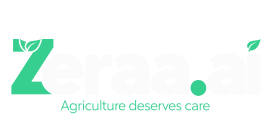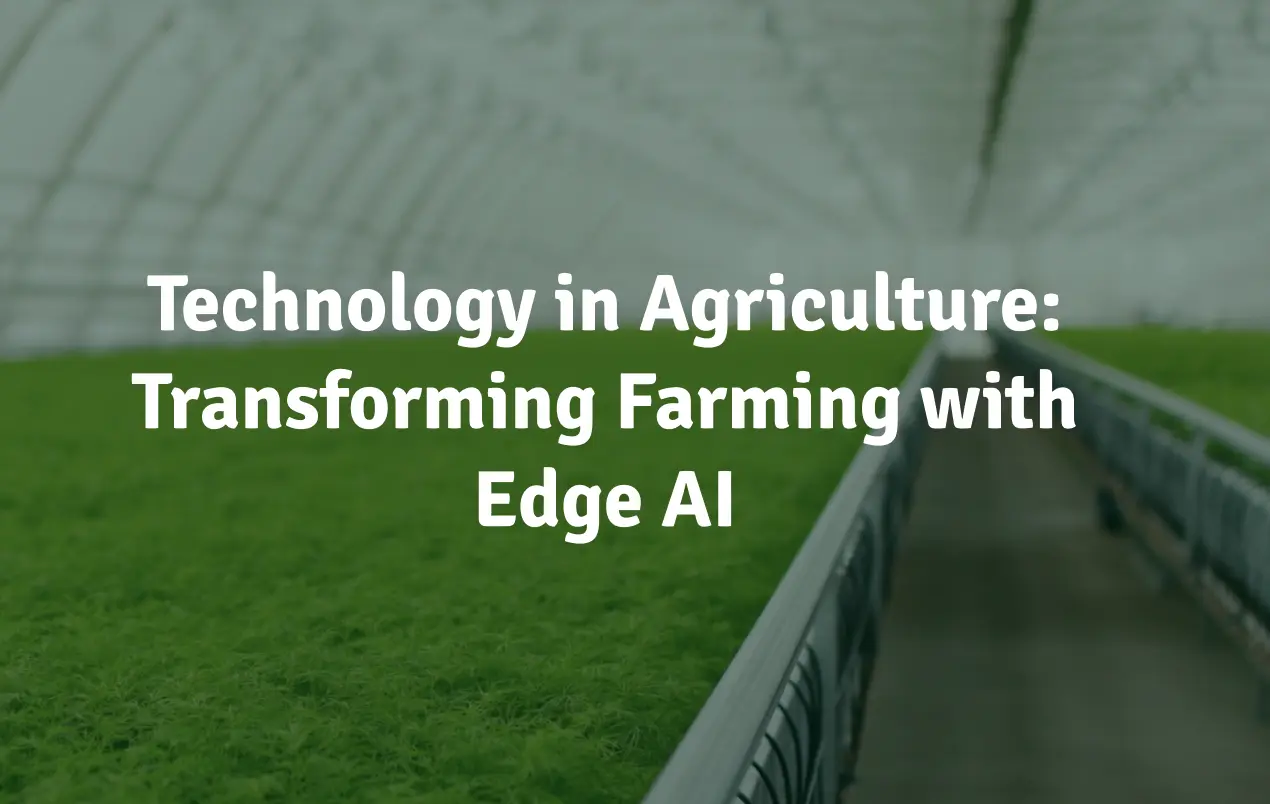



Agriculture has evolved dramatically over the last century, from manual, labor-intensive practices to a field driven by data, automation, and advanced technologies. This shift, sometimes referred to as "smart agriculture," leverages modern tools to improve crop yield, reduce environmental impact, and optimize resources. Today, farmers are tapping into innovations like the Internet of Things (IoT), artificial intelligence (AI), big data analytics, drones, and even robotics. Yet one of the most exciting technological frontiers in agriculture today is Edge AI—where AI processing occurs directly on devices close to the data source—reduces latency, enhances data privacy, and allows for real-time insights that are invaluable in agricultural settings. With these AI-powered devices strategically placed in fields, greenhouses, and nurseries, agricultural operations can monitor crop health, detect diseases, and optimize resource usage more effectively than ever before.
How Technology is Shaping Modern Agriculture
Modern agriculture incorporates a range of technologies to help farmers and agribusinesses work more efficiently and make more informed decisions:
1. Sensors and IoT Devices:
Soil sensors, moisture monitors, and climate sensors deliver real-time insights into field conditions. These IoT devices empower farmers to adjust watering, fertilizers, and crop protection strategies based on precise data.
2. Drones and Satellite Imaging:
Drones and satellites capture high-resolution imagery and data that help farmers monitor crop health, assess plant density, and identify areas needing attention. This aerial view provides insights that are difficult or impossible to see from the ground.
3. Robotics and Automation:
Automated tractors, robotic planters, and harvesters reduce labor costs and increase the efficiency of farm operations. Robots can also handle repetitive tasks like weeding, planting, and harvesting with precision and speed.
4. Data Analytics and Machine Learning:
Advanced data analytics and machine learning algorithms can predict crop yields, optimize crop rotations, and even detect diseases early. Machine learning can analyze large datasets to uncover patterns, making it possible to make more accurate, data-driven decisions.
Let’s explore how edge AI is making the best out of these advancements to help farmers manage their crops more effectively, reducing costs and improving overall yields.
Real-World Applications of Edge AI in Agriculture
- Crop Health Analysis and Disease Detection:
By using edge devices with drone and satellite imagery, farms can continuously monitor crop health at the field level. AI models deployed on edge devices can analyze images to detect early signs of diseases, nutrient deficiencies, or pest infestations, allowing farmers to respond before these issues spread.
- Predictive Maintenance for Agricultural Machinery:
Farm equipment equipped with sensors can monitor vibrations, engine health, and fuel levels in real-time. Edge AI allows for predictive maintenance by analyzing this data locally, reducing downtime by identifying mechanical issues before they lead to equipment failure.
- Autonomous Farming Equipment:
Automated tractors, planters, and harvesters rely on real-time data for navigation and task execution. Edge AI is crucial here, as it enables autonomous machinery to respond instantly to environmental conditions, obstacles, or variations in the field.
How to Get The Best out of Edge AI in Agriculture
To fully harness the potential of edge AI in agriculture, several critical factors must be addressed.
- Strategic Placement of Edge Devices:
Edge devices—sensors, cameras, and other AI-enabled tools—should be positioned across farms, greenhouses, and nurseries to capture the most relevant data and provide comprehensive monitoring. Effective device placement ensures coverage of diverse areas and critical monitoring points for optimal data collection.
- Optimized AI Models for Edge Environments:
Given the limited processing power of edge devices, AI models must be optimized to perform complex analyses efficiently. These lightweight models should be trained to handle key agricultural tasks like disease detection, pest identification, and crop growth monitoring, all while conserving resources.
- Real-Time Responsiveness:
To be effective, edge AI must deliver real-time monitoring and alerts that immediately notify farmers of potential issues, such as disease onset or environmental stress. This rapid response capability enables quick intervention, helping prevent widespread crop damage and minimizing potential yield losses.
- Data Visualization and Accessibility:
The data gathered by edge AI systems should be presented in a way that is easy to access and interpret. A centralized dashboard for visualizing trends, alerts, and insights provides farmers with a clear overview of their operations, enabling data-driven decision-making.
- Integration with Existing Systems:
For seamless operation, edge AI solutions should integrate with current agricultural management systems, creating a streamlined workflow that saves time, reduces complexity, and enhances productivity. This integration ensures that edge AI insights can be acted upon within the same platform that farmers use to manage their daily tasks.
The Need for a Platform to Drive Insights from Data
As agriculture becomes increasingly data-driven, specialized platforms are needed to manage and interpret the data gathered from edge AI. In controlled environments like greenhouses and nurseries, plant monitoring requires a dedicated system to handle the unique needs of these settings.
Introducing Zeraa: A Comprehensive Solution for Plant Monitoring with Edge AI
2. Data Privacy and Security
Zeraa is an innovative platform designed to meet the demands of plant monitoring in greenhouses and nurseries, leveraging edge AI to ensure early detection of plant health issues.
Zeraa offers a powerful solution for:
Early Disease Detection:
Zeraa’s edge AI models are trained to identify various plant diseases by analyzing visual and environmental data. The platform uses advanced algorithms to detect early signs of diseases and abnormalities in plants, allowing for rapid intervention and preventing costly crop loss.
Multi-Plant Detection:
Unlike many platforms that focus on single-crop monitoring, Zeraa’s AI models are adaptable to multiple plant types. This versatility makes it ideal for nurseries and greenhouses growing diverse crops, helping farmers track the specific needs and health metrics of each plant type.
Real-Time Alerts:
With Zeraa’s alerting system, agricultural managers receive instant notifications when abnormalities are detected. Alerts enable quick action to address problems like disease outbreaks minimizing the risk of widespread damage.
Data Visualization and Insights:
Zeraa provides a dashboard where users can view real-time data, historical data, and performance statistics. This visualization capability gives farmers a holistic view of their greenhouse or nursery environment, helping them make proactive adjustments based on data insights.
How Zeraa is Helping Agricultural Businesses Maximize the Potential of Edge AI
Zeraa empowers agricultural businesses by transforming raw data into actionable insights, allowing farmers to make the most of edge AI technology. Here’s how:
1. Improving Crop Health and Yield:
Zeraa's edge AI capabilities enable farmers to monitor plants continuously, ensuring that they stay healthy throughout their growth cycle. By catching diseases early, Zeraa helps minimize crop loss and maintain higher yields, which is essential for profitability in competitive markets.
2. Streamlining Resource Allocation:
With real-time insights into plant health, agricultural businesses can optimize resource allocation. By knowing exactly when and where to apply water, nutrients, or pest control, Zeraa reduces waste and enhances sustainability, ensuring resources are used only where needed.
3. Reducing Labor Costs:
Traditional plant monitoring is labor-intensive, requiring regular visual inspections. Zeraa automates much of this process, reducing labor costs and freeing up farm staff to focus on other high-value tasks. The platform’s alerting system means that workers only need to intervene when necessary, streamlining operations.
4. Enhanced Decision-Making:
Zeraa’s dashboard enables farmers to view trends over time, providing insights that inform long-term strategies.
5. Scalability and Flexibility:
As agricultural businesses grow, Zeraa’s edge AI platform can easily scale to cover additional greenhouses, fields, or plant types. This flexibility ensures that Zeraa adapts to the business’s needs, whether it’s a small nursery or a large, multi-location operation.
Edge AI is revolutionizing agriculture by enabling real-time, data-driven decision-making. Platforms like Zeraa make it possible for agricultural businesses to harness the power of edge AI, transforming traditional monitoring into a sophisticated, proactive system. With early detection, real-time alerts, and comprehensive data visualization, Zeraa offers a powerful solution that helps agricultural businesses make the best of their edge AI investments: letting farmers focus on what they do best—growing healthy crops—while their technology works in the background to optimize their operations.